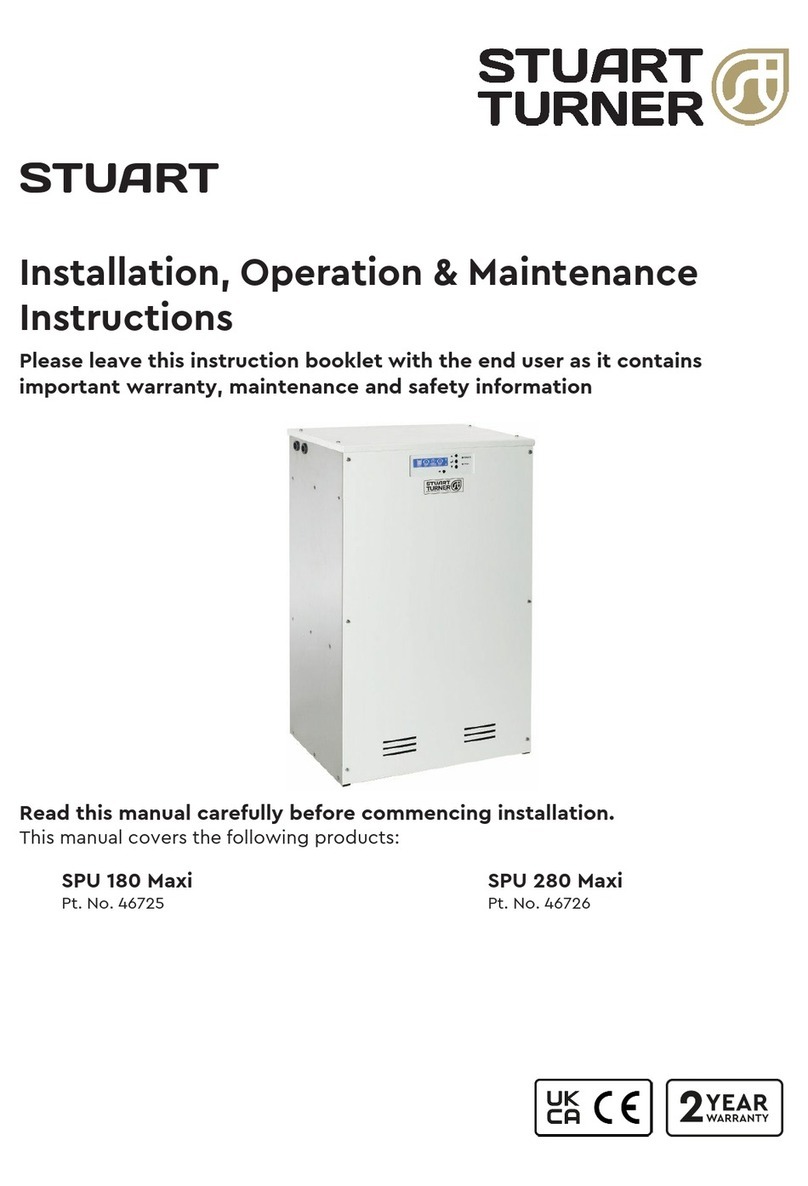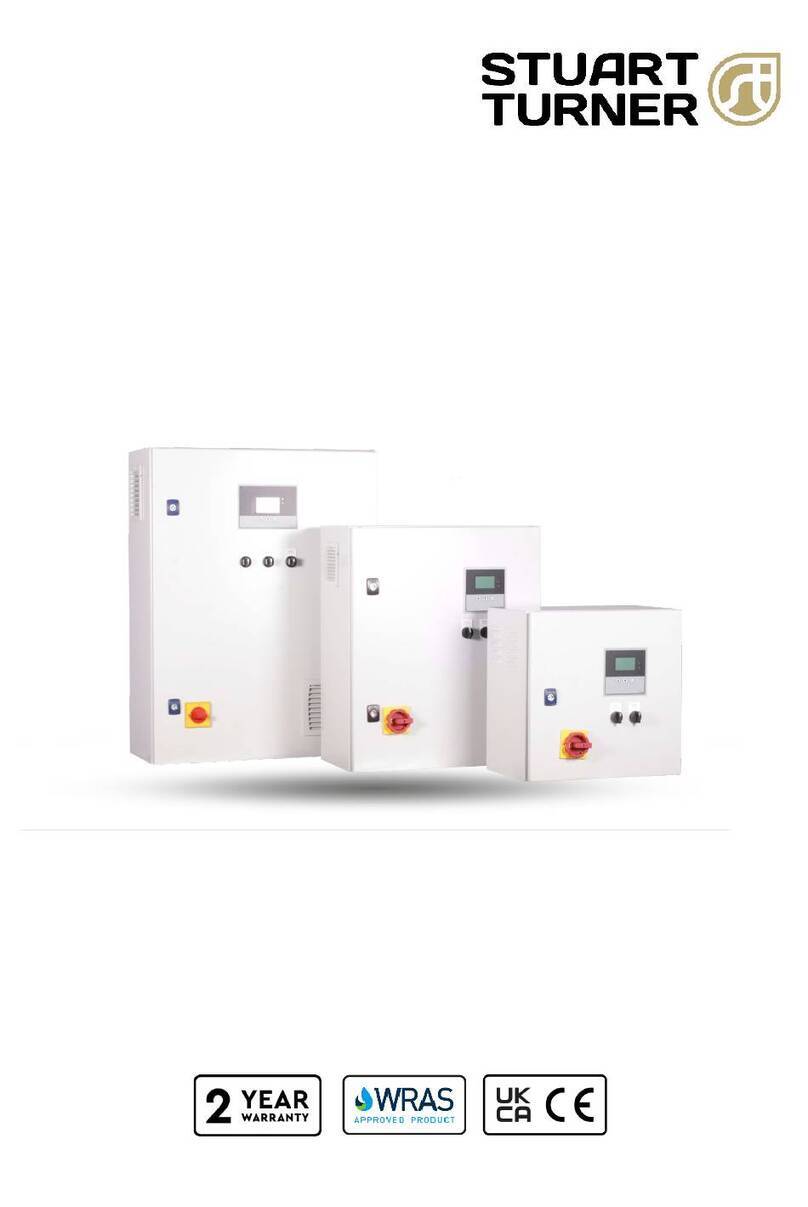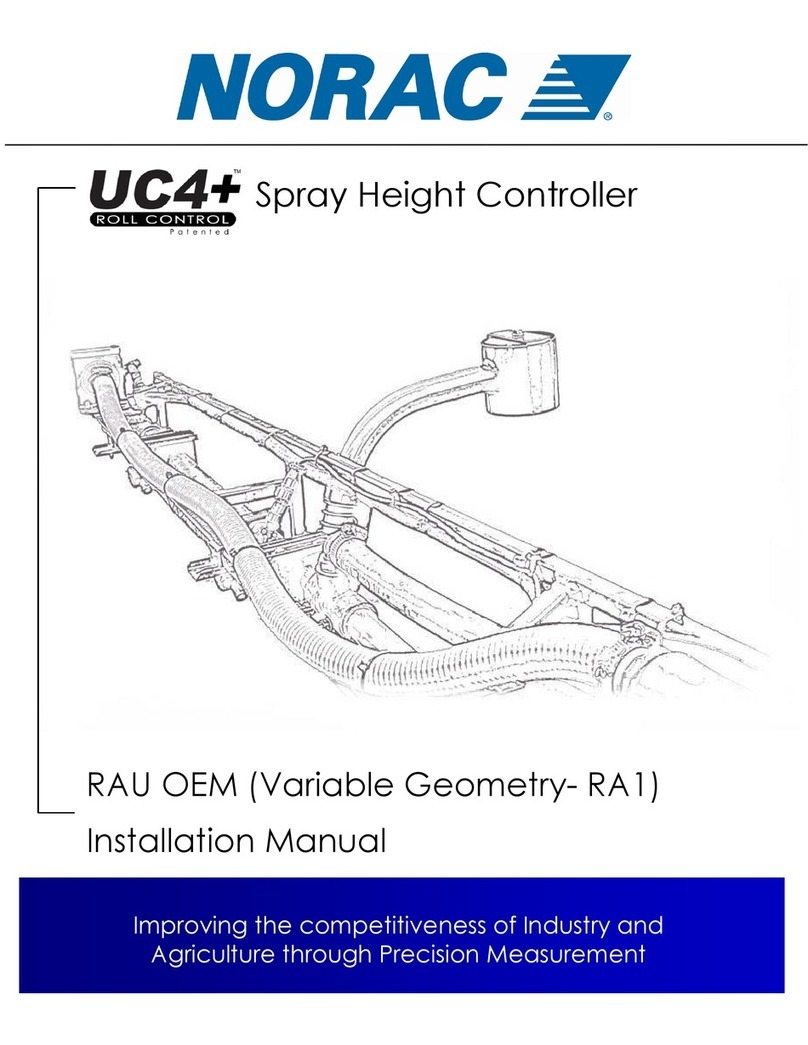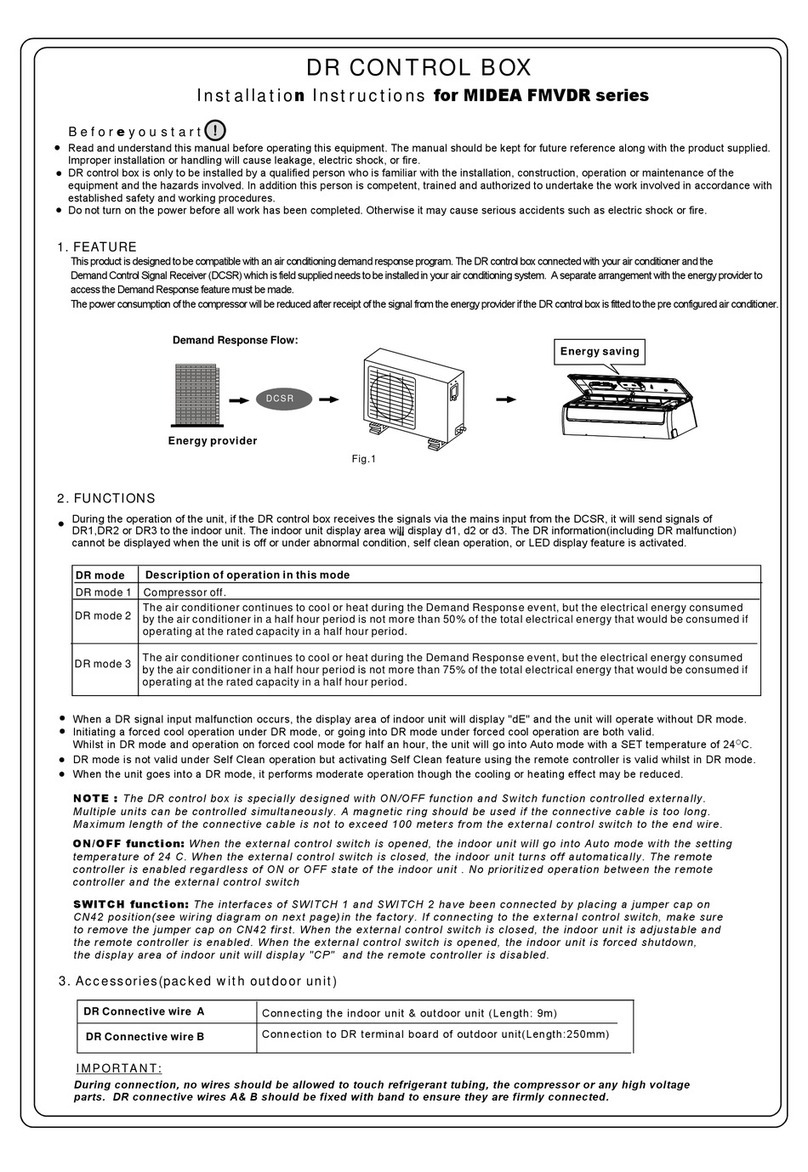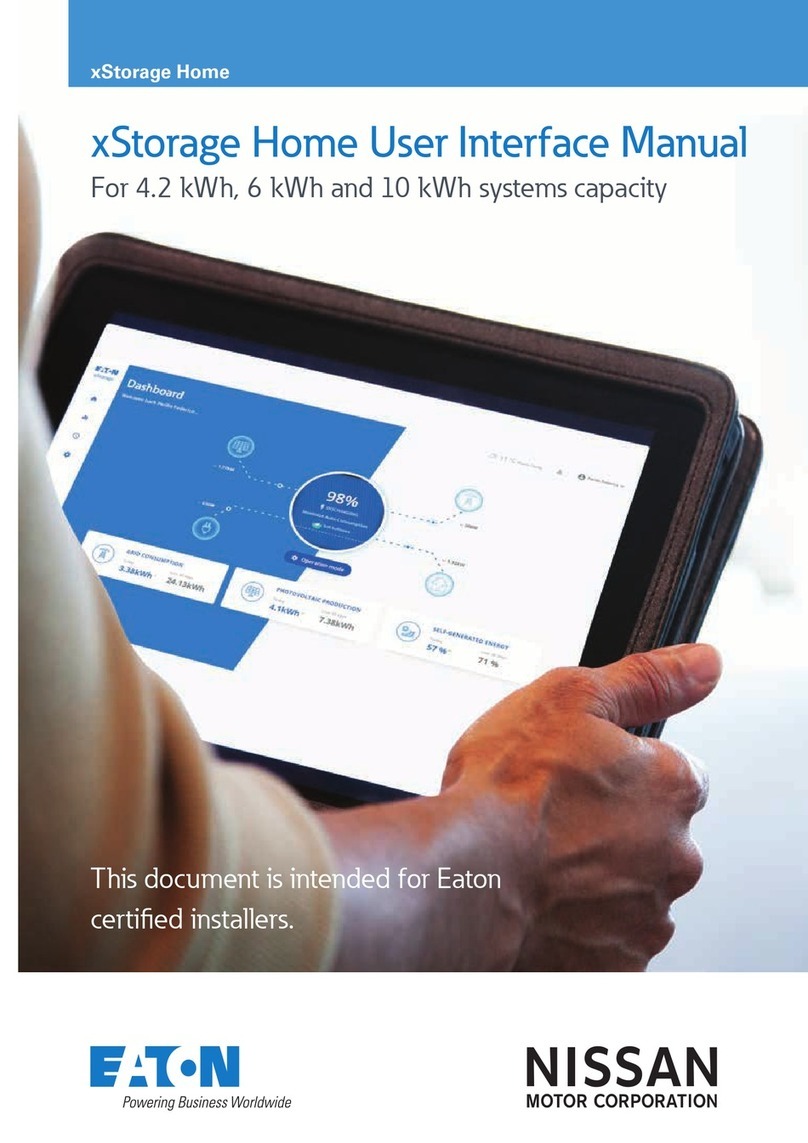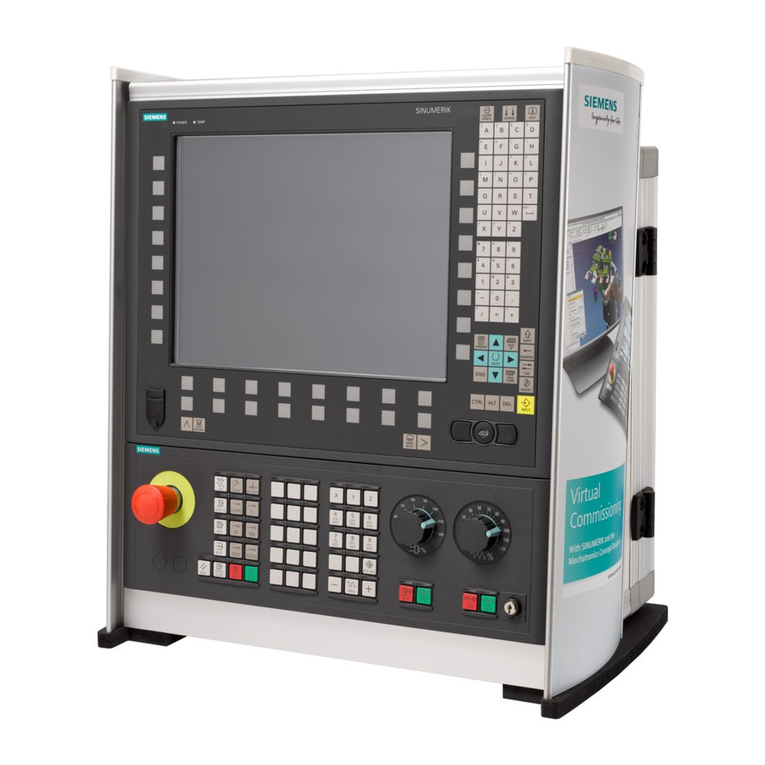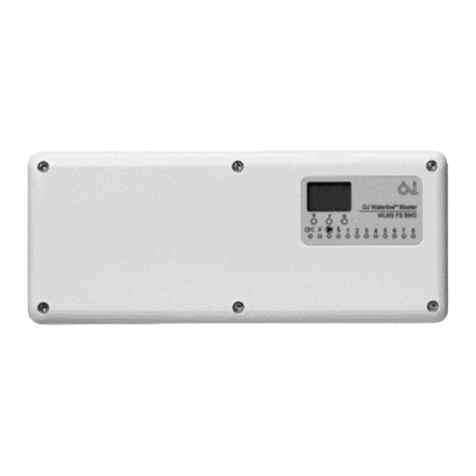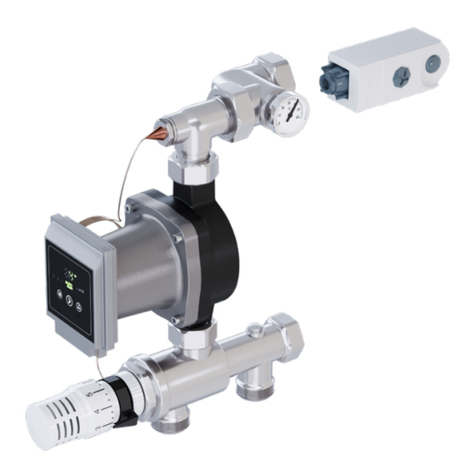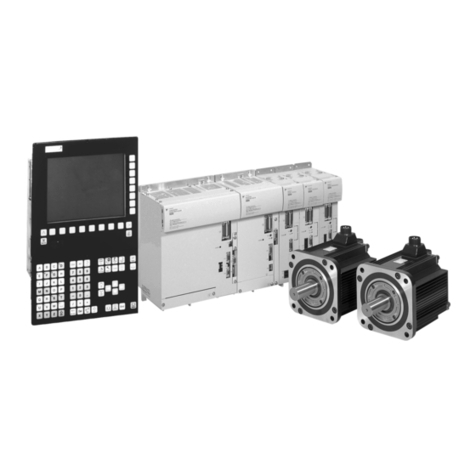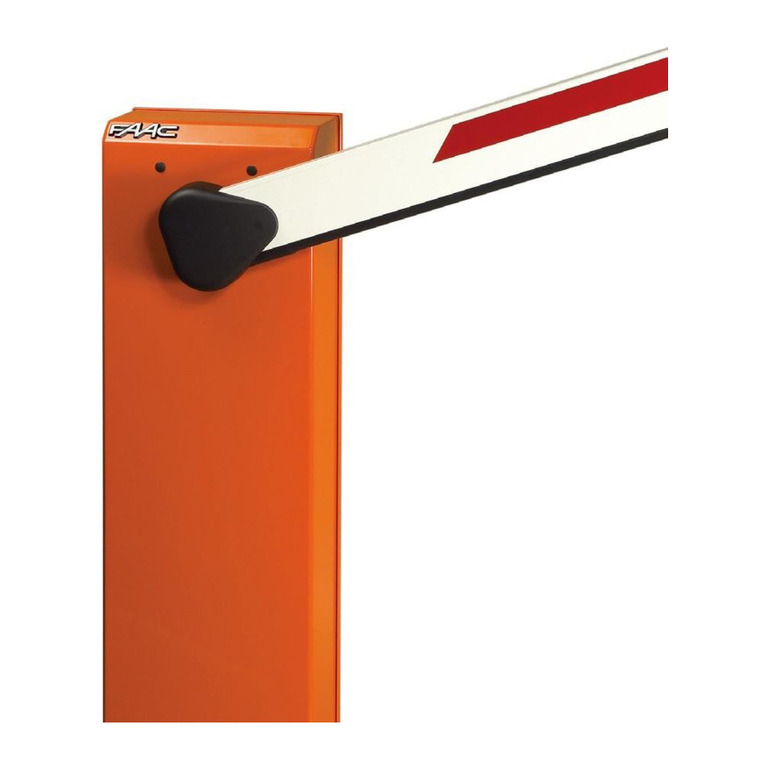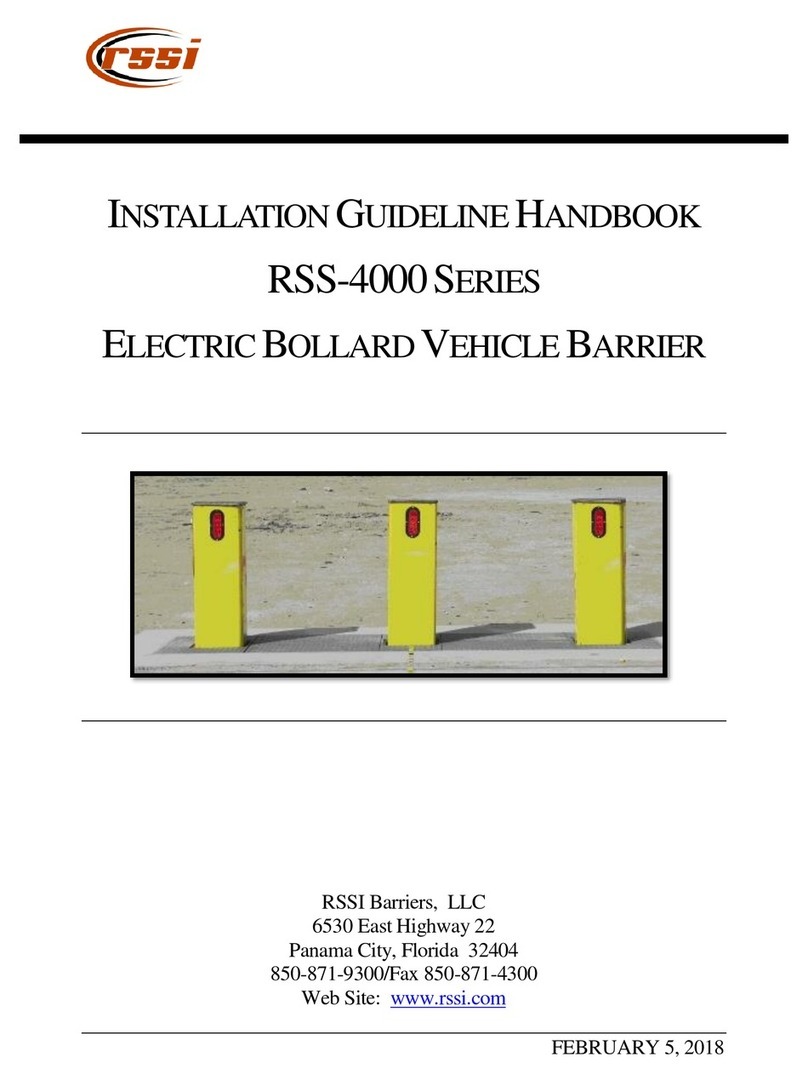Stuart Turner STUART SPU 135 Midi Guide

Installation, Operation & Maintenance
Instructions
Please leave this instruction booklet with the end user as it contains
important guarantee, maintenance and safety information
Read this manual carefully before commencing installation.
This manual covers the following products:
SPU 135 Midi
Pt. No. 46721
SPU 150 Midi
Pt. No. 46723
SPU 235 Midi
Pt. No. 46722
SPU 250 Midi
Pt. No. 46724
STUARTSTUART
CE compliant product
2

- 2 –
Cont ...
PRODUCT DESCRIPTION
Heating and cooling system pressurisation top up unit with integral water storage
tank and electric motor driven peripheral pump, automated control system consisting
of pressure transducer and water level sensors. The tank includes an AB air gap for
category 5 fluid isolation (BS EN 1717).
APPLICATION
The SPU Midi range is designed to provide initial system fill and intermittent water top
up to compensate for intermittent losses in system pressure in heating and cooling
systems in commercial or industrial applications. These could include slight leaks,
air venting, etc. The units are not designed to deal with sudden losses of system
pressure due to major water losses over extended periods. They are also not to be
used for water boosting applications.
STORAGE
If this product is not to be installed immediately on receipt, ensure that it is stored in a
dry, frost and vibration free location in its original packaging.
CONTENTS Page
Checklist ...........................................................5
Important Facts – read before commencing installation ......................6
Location ............................................................7
Key Features ........................................................9
Installation ..........................................................10
Electrical Installation ..................................................14
Commissioning ......................................................18
Operation ...........................................................25
Maintenance .........................................................27
Environment Protection . . . . . . . . . . . . . . . . . . . . . . . . . . . . . . . . . . . . . . . . . . . . . . . .28
Technical Specification ................................................29
Trouble Shooting .....................................................30
Product Log .........................................................31
Guarantee ..........................................................34

- 3 –
Cont ...
WARNINGS:
zThis appliance must not be used for any other
application without the written consent of Stuart
Turner Limited.
zThis appliance can be used by children aged from
8 years and above and persons with reduced
physical, sensory or mental capabilities or lack of
experience and knowledge if they have been given
supervision or instruction concerning use of the
appliance in a safe way and understand the hazards
involved. Children shall not play with the appliance.
Cleaning and user maintenance shall not be made by
children without supervision.
zChildren should be supervised to ensure that they
do not play with the appliance.
zThis product should not be used for the supply of
water to more than one heating/cooling system at
a time.
zThe electrical installation must be carried out in
accordance with the current national electrical
regulations.
zThe electrical installation must be installed by a
qualified person.
zThe motor is not accessible in normal operating
mode. The unit must only be operated with the
front cover in place.
zThe electrical installation must be carried out in
accordance with the current national electrical
regulations and installed by a qualified person.
zIn the interests of electrical safety a 30 mA
residual current device (R.C.D. not supplied)
should be installed in the supply circuit. This may
be part of a consumer unit or a separate unit.
zThis appliance must be earthed via the supply
cord.

- 4 –
Cont ...
Please read installation details carefully as they are intended to ensure this product
provides long, trouble free service. Failure to install the unit in accordance with the
installation instructions will lead to invalidation of the warranty.

- 5 –
Cont ...
CHECKLIST
Note:
Your product may vary slightly from the picture above.
Item Description Qty Item Description Qty
SPU 1 Fill valve flow restrictor 2
Front cover 1 Rubber hose sealing washer,
to be used with item C 2
Flexible hose, G ½ 15 mm
compression 2 Cable tie 2
M6 screw 1 Instruction book 1
Wall mounting plate 1
A
E
C
B
D
H
G
F
I
C
Fig. 1
IMPORTANT: With the appliance removed from its
packaging check for any damage prior to installation.
If any damage is found contact Stuart Turner Ltd within
24 hours of receipt.
AD
Front cover removed for clarity
B
E
Electrical
rating plate &
serial number
G
F
H

- 6 –
Cont ...
1 IMPORTANT FACTS: READ BEFORE COMMENCING PUMP INSTALLATION
A Water storage capacity.
1.11 The SPU Midi has a usable water volume of approximately 8 litres; the length
of time the SPU takes to pressurise a system will be dependent on:-
The pressure differential between the cold fill and set pressures and also the
refill rate of the tank
1.12 Ensure the pumps are primed as described in the priming section before
starting, to avoid causing damage to the pump shaft seal. See Section
6.26 Hydraulic commissioning.
B Water temperature
This unit is designed to pump cold water only which should not exceed the
following values:
1.13 The maximum allowable water temperature is 23 oC (see Technical Section).
1.14 The minimum allowable water temperature is 4 oC.
C Pipework – General
1.15 Do not drill holes or put fastenings into the SPU Midi tank, this will cause
leakage.
1.16 Secure pipework: Ensure pipework to and from pump is independently
supported & clipped to prevent forces being transferred to inlet and outlet
branches of the unit. Do not secure pipework to the SPU Midi, this will cause
damage and possible leakage.
1.17 Flux: Solder joints must be completed and flux residues removed prior to SPU
Midi installation (flux damage will void any warranty).
1.18 Pipework design: Care should be taken in the design of pipework runs to
minimize the risk of air locks e.g. use drawn bends rather than 90obends.
1.19 DO NOT introduce solder flux to flexible hose, tank, pump or any
parts manufactured from plastic.
1.20 DO NOT allow contact with oil or cellulose based paints, paint
thinners or strippers, acid based descalents or aggressive cleaning
agents.
1.21 DO NOT bend the flexible hose beyond 90o. It must be installed as
detailed, DO NOT kink. See Installation Section 4.15.
D Plumbing installation regulations
1.22 The plumbing installation must comply with the current water and building
regulations.
1.23 The plumbing installation must be installed by a qualified person.

- 7 –
Cont ...
2 LOCATION GENERAL
2.11 Location: The preferred SPU Midi location is either on a solid wall
or on a smooth level floor, both of sufficient strength to support
the filled weight of the SPU Midi, close to the water source and a
suitable overflow position (see Section 9 – Technical Specification
for filled weight). The SPU Midi must not be installed in a loft space.
It must also be considered that the noise and vibration from
the SPU Midi may be transmitted through the structure it is sited on.
Ensure the minimum clearance requirements are followed to allow
servicing of the unit
2.12 Access and minimum clearance requirements: For emergencies
and maintenance the SPU Midi must be easily accessible and have
the minimum clearance around it as laid out in Fig. 2. Additional
access to the front of the unit will be required to operate the
keypad and view the display.
2.13 Protection: The SPU Midi must be located in a dry, frost free area.
2.14 Ventilation: Ensure an adequate air flow to cool the SPU Midi.
Separate the SPU Midi from other appliances that generate heat.
Do not block the vent holes on the front cover or the air inlet at
the rear.
2.15 Water retention: Site the SPU Midi in a location where in the
unlikely event of a water leak, any spillage is contained or
routed to avoid electrics or areas sensitive to water damage.
As part of the AB airgap (CAT 5 fluid isolation) the SPU has a weir
type overflow on the right hand side, water will be discharged from
this area in the event of the failure of the inlet valve or non-return
valves.
2.16 Supply inlet pressure: The water supply inlet pressure must not exceed 7 bar.
2.17 Ambient temperature: The SPU Midi must be sited in a location where the
ambient temperature does not drop below 4 °C or exceed 40 °C.
Fig. 2
300
500
300
150150

- 8 –
Cont ...
2.18 Pipework: For optimum performance inlet and outlet pipework must be a
minimum of 15 mm pipe.
2.19 Static outlet pressure: The static outlet head must be 3 metres below pump
maximum cold fill pressure (vertically above the appliance).
2.20 Noise: A flexible hose is supplied as standard which will minimise the
transmission of noise and vibration from the SPU Midi pump to the pipework
connected to the appliance outlet. However, care must be taken when
mounting the SPU Midi that any noise is not amplified through loose panels or
pipework.
2.21 Flexible hose: Only use the Stuart Turner hoses supplied with the SPU Midi.
2.22 Isolating valves: Separate system isolating valves (non-restrictive) must be
fitted to allow easy service of the SPU Midi. Isolating valves must be mounted
where specified to allow the system isolation and removal of the SPU Midi
if needed. See Section 4.15 for installation details.

- 9 –
3 KEY FEATURES
3.11 The SPU Midi comprises of the following main components:-
1. Moulded tank – Main body of the SPU, comprising of an integrated water
tank with warning pipe and weir overflow and mounting the Stuart Turner
brass pump assembly, manifold and controller.
2. Pump assembly – One or two brass peripheral pump units powered by
induction motors, with integrated non return valves and venting screw.
Mounted into the moulded tank with vibration isolating rubber mounts.
3. Outlet manifold – Brass manifold with pressure transducer used to monitor
system pressure and connection to the pump(s).
4. Programmable controller – Stuart Turner designed, user set controller,
allowing system set up and easy alarm connection.
5. Wall mounting plate – Robust stainless steel wall mounting plate allowing
quick, easy installation and removal if needed.
6. Moulded cover – Moulded acrylic capped ABS cover retained to the
moulded tanks with Dual LockTM fastening system for quick and easy
access.
3.12 Principle of operation: The pressurisation unit consists of a break tank and
one/two peripheral pumps. The break tank is supplied with mains water from
either the left or right through a flexible hose connected to a float valve and
includes an overflow and weir to maintain an AB air gap in the tank. The unit is
connected to the heating/chiller system via another flexible hose which can
exit the unit on either the left or right. The pumps are connected to the tank
via a rubber connector.
A pressure transducer monitors system pressure and if a reduction in system
pressure is detected, the controller runs the pumps until the system is re-
pressurised to the required pre-set level. If the unit only has a single pump
connected it will run continuously until this level is reached, if the unit is a
twin pump model the pumps run in duty standby mode (the controller will
alternate which pump starts first to even the wear on the pumps). The pumps
are fitted with non-return valves to ensure system pressure is maintained once
pressurised.
1Fig. 3
2
3
4
5
6

- 10 –
Cont ...
4 INSTALLATION
4.11 Fill valve flow restrictor guidelines: The side entry fill valve must be fitted
with the correct filter and flow restrictor combination (dependant on the
mains water pressure) into the G ½ threaded tail as outlined below:
Coloured insert – To be used for water pressure between 1 and 4 bar
White insert – To be used for water pressure above 4 bar
4.12 Cold mains feed connection: The connection to the cold water mains inlet is
made using the 15 mm compression flexible hose supplied. Ensure the rubber
sealing washer supplied with the hose is installed when the hose is fitted.
When tightening ensure the fill valve within the tank is not rotated. If the
valve is rotated it may not function correctly with the risk of flooding. The
hose is made water tight with a sealing washer on assembly, nip tight to
4 to 5 Nm for water tight seal. (Do not overtighten). See Fig. 6.
Fig. 4
Fig. 5
Fig. 6

- 11 –
Cont ...
4.13 Wall plate fixing:
1. If installing the SPU Midi on a wall ensure suitable fixings for the wall
structure are used and are suitable to support the unit when fully
filled with water (see technical section for filled weights). The holes in the
wall plate are 6 mm in diameter, the maximum permissible screw head
height is 3 mm.
2. All holes in the wall mounting plate must have fixings used in them as per
the image below, do not leave out fastenings as this will compromise the
integrity of the wall plate.
3. Ensure you have sufficent room around the area you are mounting the SPU
Midi to allow installation, servicing and operation. See section 2.12.
4. Ensure wall plate is fixed to a flat vertical wall and the top of the plate is
horizontal.
5. Retain the SPU Midi to the wall mounting plate using the single M6
retaining screw at the top of the wall plate.
6. Fit the plastic cover by pressing as indicated below with the palm of the
hand as until the Dual LockTM is heard to ‘click’.
Fig. 7
Fig. 8
Fig. 9

- 12 –
Cont ...
4.14 Floor installation:
1. If installed on a floor ensure the SPU Midi is located so it cannot be kicked
or knocked over.
2. Ensure the floor surface on which the SPU Midi is located is flat and level.
3. If possible locate the unit against a wall for added stability.
4. If the SPU Midi is located in an area that might be subjected to flooding,
mount the SPU Midi on a raised plinth.
4.15 Pipework connections & guidelines:
1. Before connecting the SPU Midi to the system ensure that system flushing
has been performed correctly and all foreign matter, including pipe scale,
has been removed.
Note: Foreign material from the system coming into contact with the
expansion vessel bladder could cause premature failure of the expansion
vessel.
2. Isolating valves MUST be installed on the unit inlet and outlet, before
connection to the flexible hoses to allow the unit to be isolated if required.
The isolation valve on the outlet should be of a lockshield type. See
Fig. 12.
3. A drain valve must be fitted on the outlet of the SPU Midi before the
isolation valve. See Fig. 12.
4. The connection to the heating/chilling system is also made with the
supplied flexible hose and a 15 mm compression fitting. The hose is made
water tight with a sealing washer on assembly, nip tight to 4 to 5 Nm
for water tight seal. (Do not overtighten).
5. The connection to the heating/chilling system can be made to the left or
right hand side by routing the flexible hose supplied as detailed below.
Fig. 11Fig. 10
Cable tie

- 13 –
Cont ...
6. The flexible hose and any wiring can be retained in the desired position
using cable ties and the two metal cable retention points on the top left
and right of the SPU tank. See Figs. 10 & 11.
7. The warning pipe should be connected to a suitable drain via a tundish
enabling visual warning of an overflow condition. The overflow fitting is
designed to use 19 to 23 mm diameter plastic waste pipe or connect to
G ¾ threaded pipe. Ensure there is a demountable joint in the pipe to
allow the removal of the SPU Midi if needed.
8. Non-return valves, pressure reducing valves and RPZ valves MUST NOT
be installed between the SPU Midi and the heating/cooling system. These
devices will prevent the pressure sensor from reading the system pressure
and will lead to incorrect operation of the unit.
9. The SPU Midi should be connected to the system return header along with
the expansion vessels as specified in BS 7074. See Fig. 12.
4.16 Typical installation diagram:
4.17 Vessel sizing & location:
1. System expansion vessel sizing should comply with the BS 7074 Expansion
Vessel sizing calculation.
2. The pressurisation unit and expansion vessels should be connected to the
system at the same point, to provide a neutral pressure reading.
3. A lockshield valve and drain valve should be installed at the inlet of each
expansion vessel to allow for servicing.
Fig. 12
Fig. 13
SPU Midi
Warning
pipe
Drain
valve
Isolation
valves
Expansion
vessel
Return
header
Lockshield
valve
Drain valve

- 14 –
Cont ...
5 ELECTRICAL INSTALLATION EARTHING
5.11 Regulations: The electrical installation must be carried out in
accordance with the current national electrical regulations and
installed by a qualified person.
5.12 Safety: In the interests of electrical safety a 30 mA residual current
device (R.C.D. not supplied) should be installed in the supply circuit.
This may be part of a consumer unit or a separate unit.
5.13 Before starting work on the electrical supply ensure power supply is
isolated.
5.14 DO NOT allow the supply cord to contact hot surfaces, including the
motor shell, pump body or pipework. The cord should be safely
routed and secured by cable clips.
5.15 Adjacent pipes: Adjacent suction and delivery pipes should be fitted with
earthing clamps in accordance with current regulations (Fig. 14).
5.16 Earthing: This appliance must be earthed via the supply cord.
5.17 Pipework: Copper or metallic pipework must have supplementary earth
bonding where the continuity has been broken by flexible hoses or plastic
components.
5.18 Additional earthing: Certain installations may require additional earthing
arrangements such as equipotential bonding. Reference should be made to
the relevant regulations concerning this subject to ensure compliance.
5.19 Connections: The SPU Midi must be connected to a dedicated fused spur via
a lockable isolator to avoid authorized disconnection.
5.20 The electrical connection must be made adjacent to (not behind) the SPU
Midi to allow disconnection of the electrical supply should the pump module
need to be removed for service or maintenance.
Earth continuity
connection
Fig. 14
Flexible
hoses Metallic
pipework

- 15 –
Cont ...
5.21 Wiring of connection unit:
WARNING: This appliance must be earthed.
The wires in the mains lead (supply cord) are coloured in accordance with the
following code:
Green and Yellow: Earth
Blue: Neutral
Brown: Live
As the colours of the wires in the mains lead of this appliance may not
correspond with the coloured markings identifying the terminals in your
connection unit proceed as follows:
zThe wire which is coloured green and yellow must be connected to the
terminal in the connection unit which is marked with the letter E or by the
earth symbol: or coloured green or green and yellow.
zThe wire which is coloured blue must be connected to the terminal which
is marked with the letter N or coloured black.
zThe wire which is coloured brown must be connected to the terminal
which is marked with the letter L or coloured red.
5.22 Boiler interlock safety function:
The SPU Midi is fitted with a volt free contact specifically assigned for boiler/
chiller shut down in the event that the SPU Midi detects system pressure
above the Hi alarm pressure or below the Lo alarm pressure.
The boiler interlock contact will be open circuit below the Lo alarm pressure
and above the Hi alarm pressure.
When the system pressure is in its normal operating pressure range (above Lo
alarm pressure and below Hi alarm pressure settings) the contact is
closed circuit
Always refer to the boiler/chiller manufacturer’s instructions for correct
integration.

- 16 –
Cont ...
5.23 Alarm and boiler interlock connections:
Circuits connected to the relays are limited to 5 Amps, 230 V a.c.
maximum. The Installer MUST fit a 5 Amp fuse in the circuit to the
alarm relay to protect the SPU Midi from damage.
For connection of output relays follow the steps and images below:
1) Remove the required green connector from the right hand side of the
control board.
2) Strip 6–8 mm insulation from the end of the connection wire (Max 1.5 mm2
CSA).
3) Insert wire into connector and screw down terminal screws to secure
(0.6 Nm max.).
NC
NO
NO
NO
Boiler Interlock
Common Alarm
High pressure alarm
Low pressure alarm
Fig. 15
Fig. 16
Fig. 17
Fig. 18

- 17 –
Cont ...
4) Re-insert connector into the correct location on the control board and
route the cable to the back of the SPU Midi and secure with a cable tie to
the retainer.
5.26 Supply cord replacement:
The supply cord and internal wiring within the terminal box are
routed and secured to ensure compliance with the electrical
standard EN 60335–1. It is essential that prior to any disturbance
of this internal wiring, all cable routing and securing details are
carefully noted to ensure re-assembly to the same factory pattern
is always maintained.
If the supply cord is to be changed or is damaged, it must be replaced with a
special cord assembly available from Stuart Turner or one of their approved
repairers.
On disassembly note the cord retention and routing system. Re-assemble to
the same pattern.
For information on cable connection consult the wiring diagram.
Model Fuse Size (AMPS)
All models 5
5.24 RS 485 Modbus – BMS Connection:
RS 485 is available on this product for BMS connection and is enabled in the
Advanced settings menu.
5.25 Fuses: The following fuse size should be used:
Fig. 19
Retainer
Cable tie

- 18 –
6 COMMISSIONING
6.11 Pre-commissioning checklist:
Before starting the commissioning process the following conditions must be
met. If these conditions are not adhered to, damage to the equipment,
system and property may result.
zEnsure the unit is sited in a frost free area, away from precipitation and
water sprays/jets.
zAll necessary pipe/electrical connections should have been made to a
satisfactory standard by a qualified person.
zThe temperature and pressure at the point of connection are within the
operating limits of the pressurisation unit.
zThe heating/cooling system is fitted with a safety valve and expansion
vessel sized appropriately.
6.12 In order for the pressurisation unit and heating/cooling system to function
correctly the following conditions must be met. If these conditions have not
been met, the commissioning process should not continue.
zEnsure the system connection has been made into the heating/chiller
system return header.
zEnsure Non-return valves, pressure reducing valves or RPZ valves are NOT
installed between the pressurisation unit and the heating/cooling system.
zThe expansion vessel is pre-charged to the correct pressure (equal to
initial system design pressure).
6.13 Prior to commissioning fill the heating/cooling system via a filling loop if
possible. If this is not possible, the pressurisation unit can be used to fill the
system after commissioning has taken place. Depending on the size of the
system, this may take a considerable amount of time. The system fill
function of the unit will stop after 24 hours, if further filling is required,
reset this function.
zEnsure the heating/cooling system is filled and pressurised to the required
cold fill pressure, with the water at approximately ambient temperature.
zEnsure the system is dosed with a suitable corrosion inhibitor. Note the
SPU Midi is not designed for dosing chemicals into the system, this must
be done via other means.
6.14 Expansion vessel setting:
zTo set or check the expansion vessel charge pressure the lock-shield
valve between the SPU Midi and the vessel must be closed and the
vessel drained using the drain valve.
zA suitable gauge should be used to check the charge pressure.
zIf the charge pressure is too high it can be reduced by releasing air from
the vessel pre-charge valve or by using a pressure gauge with an integral
air release valve.
zIf the charge pressure is too low a small increase can be provided using a
car foot pump otherwise an oil free compressor or nitrogen bottle is
recommended.
zWhen the correct pressure is set the Schrader valve protective cap must
be replaced.
zCheck the integrity of the pipe-work. Ensure the lock-shield valve
between the system and the expansion vessel is open and the drain
valve is closed.

- 19 –
Cont ...
6.15 Controller overview
The Stuart Turner SPU controller is designed to be intuitive to use and allows
functions and alarms to be set by the installer/user. It also allows faults to be
monitored and logged to enable easier system fault diagnosis.
The functions are set using the 4 buttons (A, B, C & D) on the front of the
controller and with the help of on screen prompts via the back lit LCD display.
On the front of the SPU a green ‘power on’ light will be displayed whilst the
unit is powered. If an alarm or error is raised the red ‘Error’ light will be
displayed.
A number pressure set points can be set using the menus, these set points are
detailed below, 1 to 4 and in the description of the function.
Button A Scrolls up through menus or increases set values.
Button B Enters menus or selects values.
Button C Scrolls down through menus or reduces set values.
Button D Returns to previous menu
TIME
PRESSURE
HIGH ALARM SET VALUE (1)
LOW ALARM SET VALUE (4)
SYSTEM PRESSURE SET VALUE (2)
DIFFERENTIAL SET VALUE (3)
PUMP 'OFF'
PUMP 'ON'
SYSTEM FILL MODE NORMAL OPERATION
SYSTEM PRESSURE
Fig. 20
Fig. 21
A
B
C
D

- 20 –
6.16 Function list & explanation
The functions are contained within an initial display and 3 menus:-
Setting menu (pass code protected) see Section 6.18.
Advanced setting menu (pass code protected) see Section 6.19.
Test menu (pass code protected) see Section 6.20.
6.17 Initial display
On start up, and during operation, if the SPU has had no button inputs for
1 minute, a home screen (see Section 7.11) will be displayed with system
pressure, tank water level, any active alarm and any pump that is operating at
the time.
By using buttons A & C to scroll up or down the following screens will be
displayed:-
System pressure
Active errors
System fill status
Pump activity
Pump run time
Alarm reset
6.18 Setting menu
(Pass code protected, if set)
The following functions can be set and modified:-
System pressure (2)
see Fig. 20
Sets the required system pressure. Set in 0.1 bar
increments up to the maximum set value for the SPU model. SPU
130 & 230, 3.5 bar max., SPU 150 & 250, 4.1 bar max.
Differential pressure (3)
see Fig. 20
Sets the pressure the SPU will turn on at as the system
pressure falls. Relative to the system pressure. Set in
0.05 bar increments below the System pressure (2), cannot be
set above 0.1 bar below the System pressure (2).
Hi Alarm (1)
see Fig. 20
Sets high system pressure alarm. Set in 0.05 bar
increments above the System pressure (2). Cannot be set below
System pressure + 0.5 bar. Alarm auto resets when system
pressure is reduced below alarm level.
Lo Alarm (4)
see Fig. 20
Sets low system pressure alarm. Set in 0.05 bar increments
below the System pressure (2) – Differential pressure (3) – 0.05
bar. Alarm auto resets when system pressure is increased above
alarm level
System fill
Turns on system fill option. System fill option will turn off
once the System pressure (2) has been reached or a period of
24 hours has passed since it was set to ‘on’. Lo alarm and Max
runtime functions are disabled whilst System fill is turned on.
Pumps will stop if the System pressure (2) or Hi alarm pressure
(1) is reached.
Start Activity High
Alarm triggered if the SPU starts more than the preset
limit in 24 Hours.
Set to minimum of 100 starts per 24 hrs. Set in increments of
100.
This manual suits for next models
7
Table of contents
Other Stuart Turner Control System manuals
Popular Control System manuals by other brands

vision microsystems
vision microsystems EPI 800 Installation Notice

2VV
2VV AirGENIO Installation, operation and maintenance manual
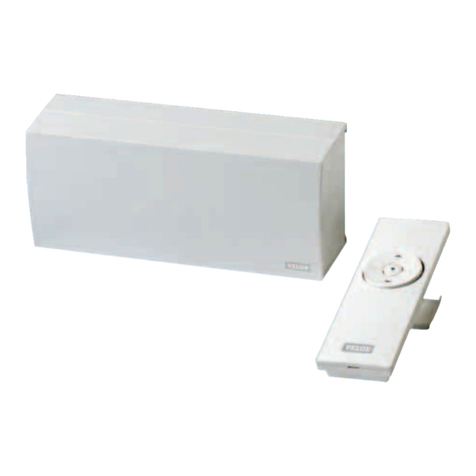
Velux
Velux KUX 100 instructions

SILENT KNIGHT
SILENT KNIGHT 2820 installation manual
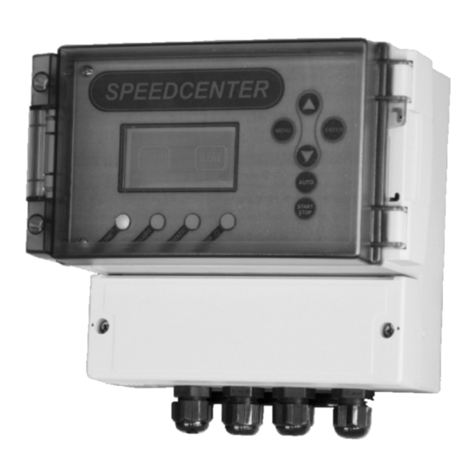
Coelbo
Coelbo SPEEDCENTER S101040 operating instructions
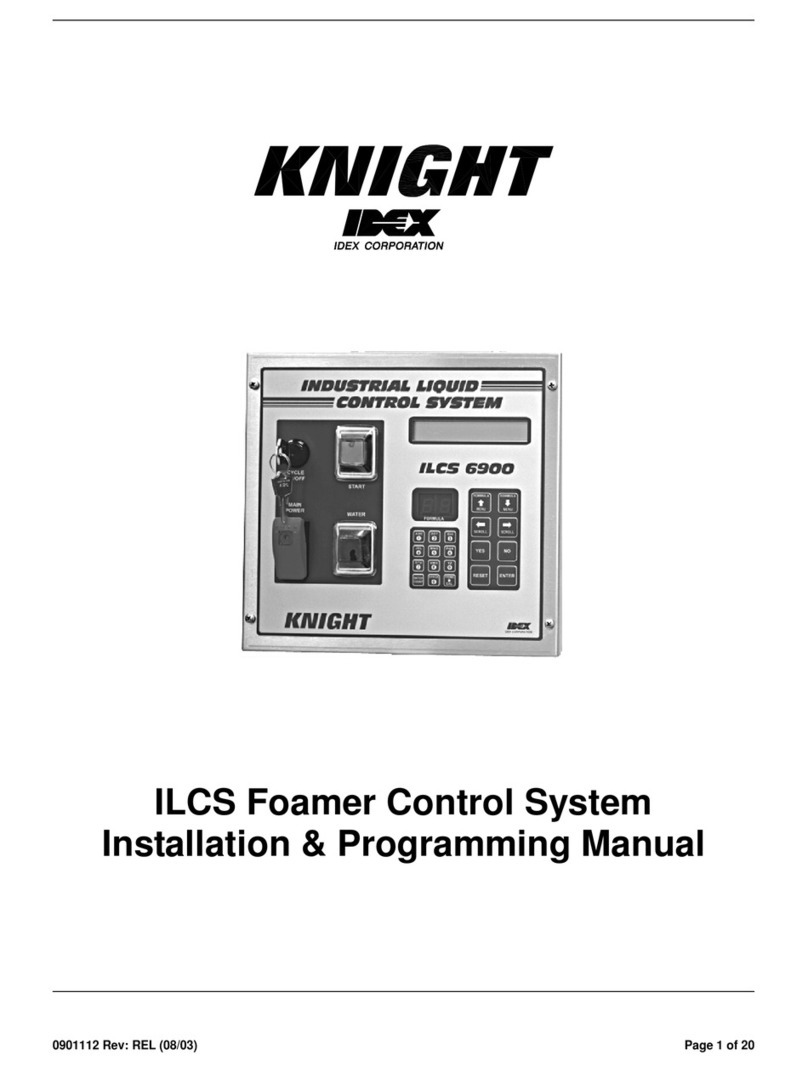
Knight
Knight ILCS Installation & programming manual
